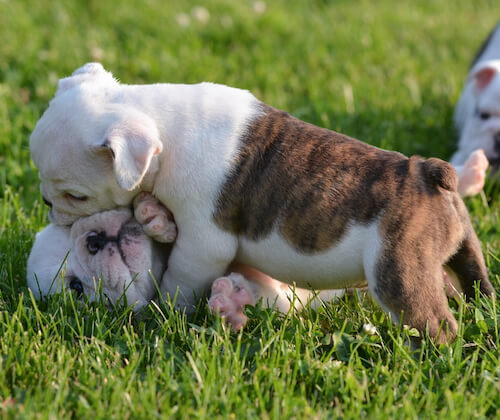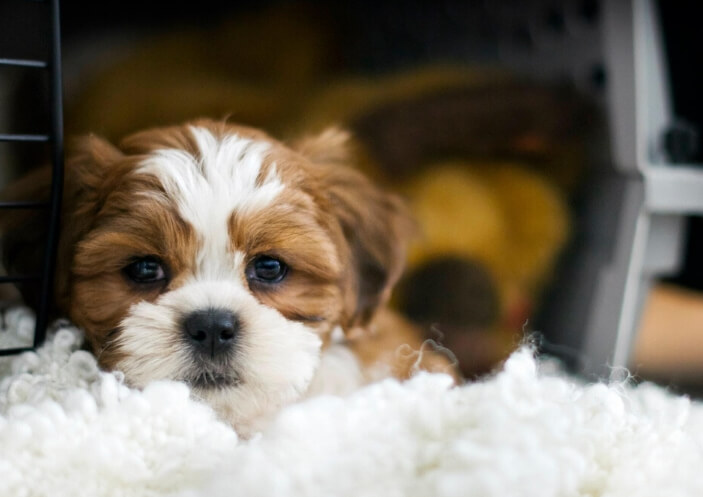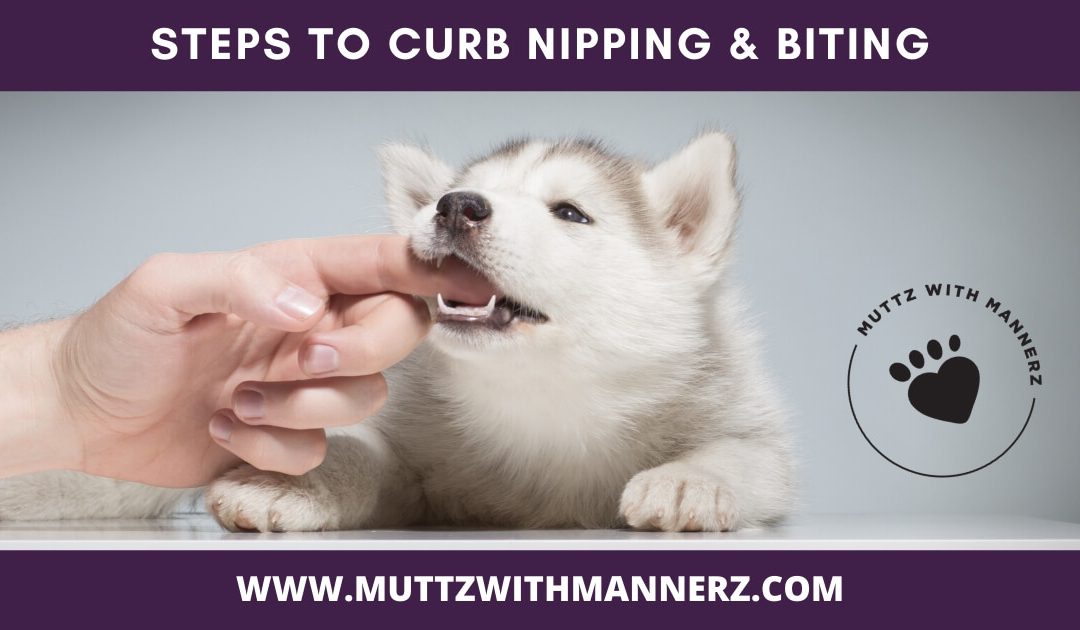Our last article in the New Puppy series was focused on conditioning your puppy to a crate; how to keep it as a pleasant place for your puppy, not a punishment. Here is a link to that article.
Today we are going to address natural behaviors that your puppy does and will need your help to develop control over – mouthing, nipping and biting.
At an early age you will notice very quickly that your puppy mouths or nips/bites just about anything or anyone it comes in contact with. This is a very natural behavior as the puppy is exploring, but it is also very important that your puppy learns to use their mouth and teeth gently.
A natural response as soon as you are on the receiving end of those sharp little teeth is to stop the behaviour. Ouch! No one wants a dog that could bite and cause damage to a person or another dog. So to ensure that your puppy learns properly what is acceptable behaviour, you will have to teach your puppy how to use their teeth gently.
The term for this is bite inhibition.
All dogs have the potential to bite whether through excitement or aggression. It is your responsibility to ensure that your puppy learns how to use their mouth gently.
Here are 3 Steps to help you guide your puppy to create bite inhibition:
STEP 1: Teach Puppy to Use Their Mouth Gently
 One of the key benefits of a puppy staying with its mum and littermates until at least 8 weeks is that this process begins naturally. If a puppy nips a littermate too hard, the other puppy usually yelps or stops playing. This lets the pup know that the bite was too hard.
One of the key benefits of a puppy staying with its mum and littermates until at least 8 weeks is that this process begins naturally. If a puppy nips a littermate too hard, the other puppy usually yelps or stops playing. This lets the pup know that the bite was too hard.
When you are with your puppy and they do the same to you, act like one of their littermates. If your puppy bites you should give a little yelp or say “ouch” in a serious tone. This should make them back-off and reconsider what just happened.
If they start again yelp or say “ouch” and then move away from your pup, pay no attention to them and stop playing for a few minutes. If you consistently repeat these steps your puppy will quickly learn that it has to use its mouth gently if it wants someone to play with them.
STEP 2: Reducing the Frequency of Biting
Although you have now trained your puppy to use their mouth gently it is still important to reduce the frequency of this behaviour. Your puppy will soon be a grown dog and any type of biting, even in play, can be very scary for people, adults and particularly children, and also other dogs.
The most common command that you will use to teach this is “leave it”. We recommend that you discuss this with your trainer for some initial guidance to get started. Like other commands with patience and consistency your puppy should learn very quickly curb their biting frequency.
STEP 3: Redirecting their Biting
There are times when it is okay for your puppy to use a stronger bite, but once again your puppy needs to be taught when this is okay – for example during playtime and also what is okay to bite, like one of their toys!
Particularly when your puppy is young the desire to play can overwhelm all the teaching. To help your puppy expend some energy and have some fun you will want to redirect their attention away from biting your or others and instead focus this behaviour on one of their toys.
 How can your crate help with curbing mouthing, nipping and biting?
How can your crate help with curbing mouthing, nipping and biting?
Like toddlers if your puppy doesn’t get enough quiet time or sleep, their excited state can make it difficult for you to get their attention or for them to remember what you have taught them…they can’t help themselves.
Before the excitement escalates too far use the crate training techniques you learned in Part 2 of this series to gently and patiently guide them to their crate for a rest.
If we can be of any assistance with your nipping or biting concerns, please contact us at info@muttzwithmannerz.com.
Remember patience and kindness will help your puppy succeed!
In our next article, we will discuss grooming your puppy – setting yourself up for future grooming success.

